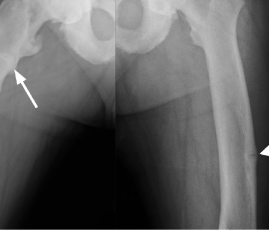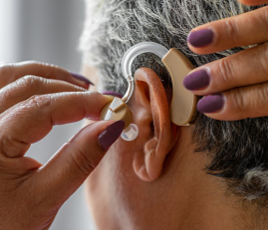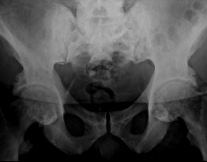Symptoms experienced in adulthood1

Fractures and pseudofractures

Hearing loss
Other symptoms in adulthood includes:3
- Enthesopathy or the calcification of ligaments, tendons, and joint capsules
- Spinal stenosis
- Osteoarthritis
Muscular dysfunction
Chronic hypophosphatemia also affects the muscles in the body.
Muscular symptoms present as:1
Stiffness
Pain

Muscle pain and weakness

Gait disturbances
Dental abnormalities
Chronic hypophosphatemia can lead to dental defects by causing enlargement of the pulp chambers and damage to the enamel.1
Dental symptoms present as:1,2

Dental abscesses and periodontitis
Because some symptoms of XLH like chronic pain or fatigue may not be visible, it is important to listen to your patients. Getting an accurate diagnosis can help prevent exacerbation of symptoms that your patient may experience.
XLH progression in real patients

49-year-old male with hereditary XLH
Learn more
 Français
Français






